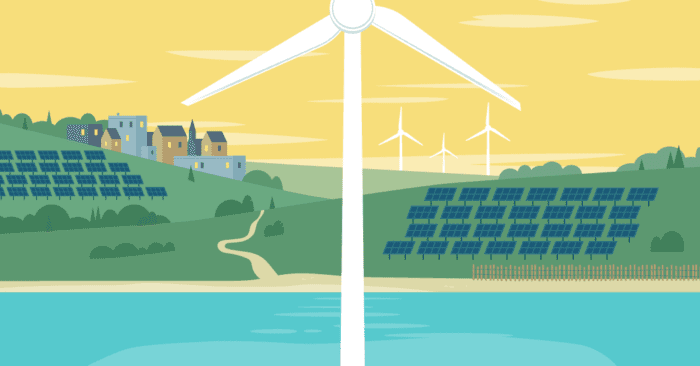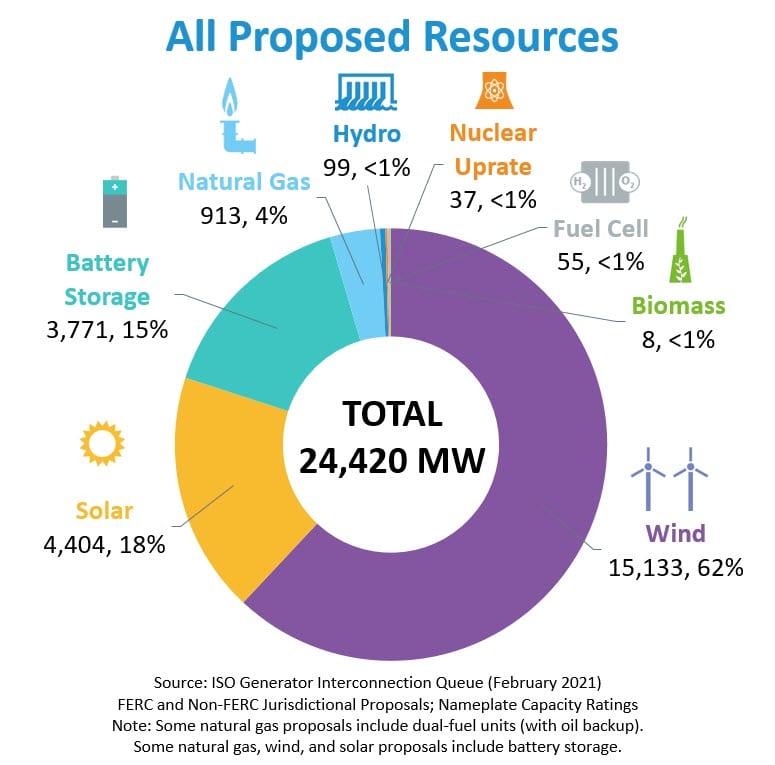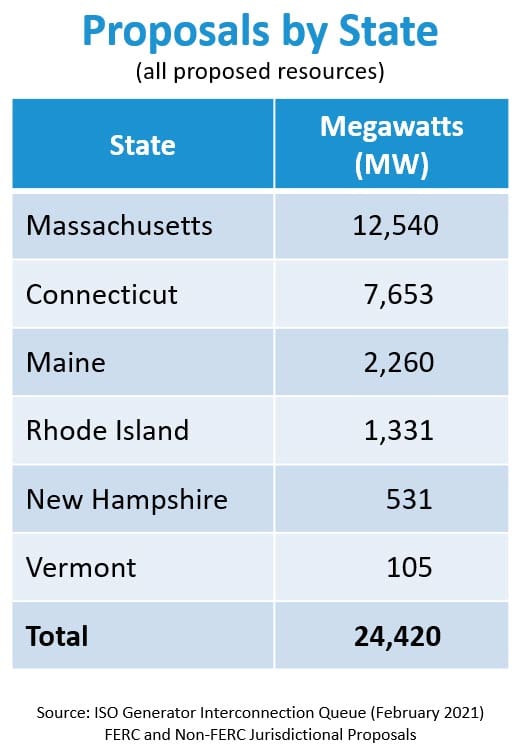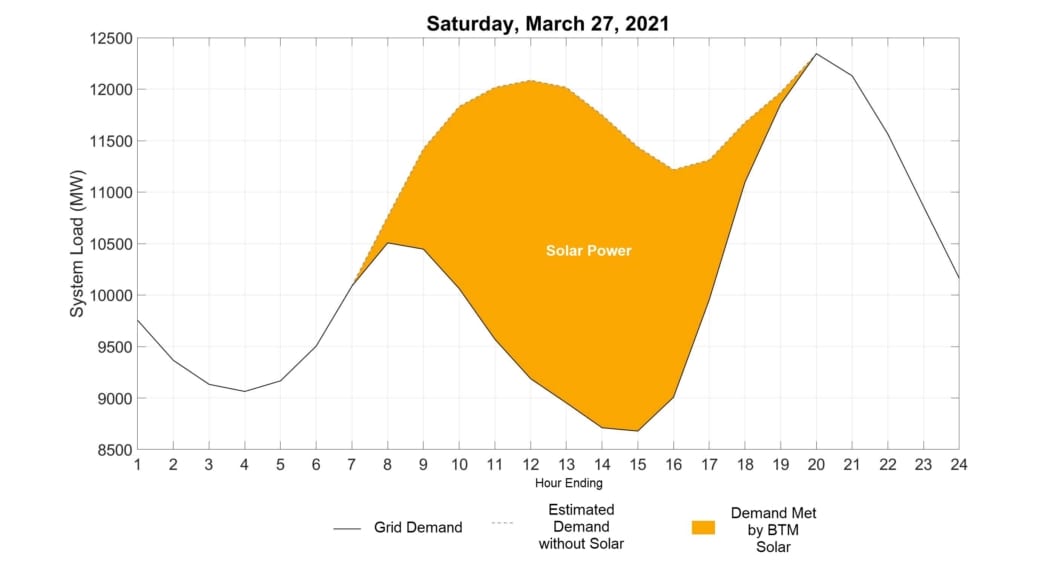A queue and a curve: Signs in New England of a greener grid this Earth Day

Just five years ago, 63% of the ISO New England interconnection queue was comprised of proposals for natural gas generation. A single day during which grid demand was lower in the afternoon than overnight would have been highly unlikely.
But today, wind power comprises the majority of new proposals, making for an interconnection queue that’s 90% carbon-free. And New England has seen 27 days when electricity demand was lowest during the day.
These remarkable shifts in energy production and consumption represent early milestones on the region’s journey to a cleaner grid. As we celebrate Earth Day, they remind us that progress occurs when we work together toward a greener future.
A changing queue and unusual curve
The ISO interconnection queue, which tracks proposals for new energy resources seeking to connect to the region’s grid, has doubled in recent years, with proposals for clean energy like wind, solar, and battery storage far outpacing those for natural gas generation. The vast majority of resources in the current queue—90%—are carbon-free. At present, proposals for wind power comprise two-thirds of proposed new resources, and solar power makes up an additional 18%.


While the queue provides a snapshot of potential future resources, usage patterns are showing us that distributed energy resources such as BTM solar (behind the meter, or solar connected to the distribution network and not high-voltage transmission) are already shifting daily demand curves. The ISO first spotted this particular “duck curve” indicating grid demand was lower in the afternoon than overnight, on April 21, 2018. Since then, solar power has reduced grid demand enough to produce the same-shaped curve 26 additional times, including this instance from March:

Planning a greener future
These changes in proposed resources and daily demand patterns have been driven by years of federal and state legislation aimed at reducing carbon emissions while meeting energy demands. The ISO will continue to support these goals by taking steps to plan and operate a reliable, greener grid, including working with NESCOE (New England State Committee on Electricity) and NEPOOL (New England Power Pool) on the Future Grid initiative.
“Ongoing cooperation built on our strong history of partnership will help us find the right path forward in this era of profound change,” said Board Chair Kathleen Abernathy and President and CEO Gordon van Welie in this year’s Regional Electricity Outlook. “Collaboration will be even more essential as we implement a shared vision for the regional power system.”
- Categories
- Inside ISO New England
- Tags
- energy storage, future grid, renewable resources, solar, transmission planning, wind
